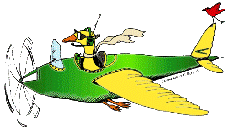Bird Strike Committee Proceedings
Date of this Version
October 2002
Document Type
Article
Abstract
The reporting of wildlife collisions with aircraft in almost all places, worldwide, is voluntary. As a result data with which to design, manufacture and operate aircraft to mitigate this hazard is poor. Voluntary reporting of strikes has resulted in data collection rates in the USA of around 20%, and only about 9% of the reported strikes contain complete data on bird species. Aviation manufacturers also agree that collection of strike data is difficult, incomplete and without an industry best practice. Air carriers, when research is done, are amazed to find that strike rates may be eight times higher than their normal collection methods demonstrate. The USA safety agency, NTSB, has recommended that wildlife strike reporting be mandatory. Reporting methods and databases, in the USA and Canada, are already in place. ICAO maintains a strike database for states worldwide, but participation is poor. While the cost of mandatory reporting is often cited as a reason for not implementing mandatory reporting, the cost of not reporting is higher. Since 1995, over 130 people, worldwide, have lost their lives to collisions between wildlife and aircraft. Air carriers lose US$1.2 billion to bird strikes each year. If carriers reduced this loss by only 25%, the savings to carriers each year would be US$300 million. Without adequate data, neither the location, nor the frequency, nor the type of problem wildlife can be adequately identified. Neither adequate aircraft design nor operating techniques can be developed without data. Voluntary reporting has not worked: it is time for mandatory reporting of data.


